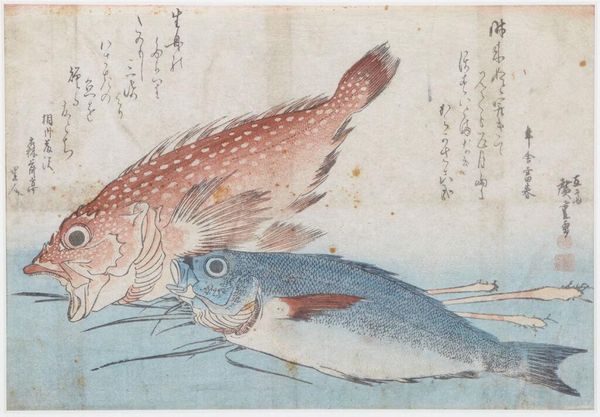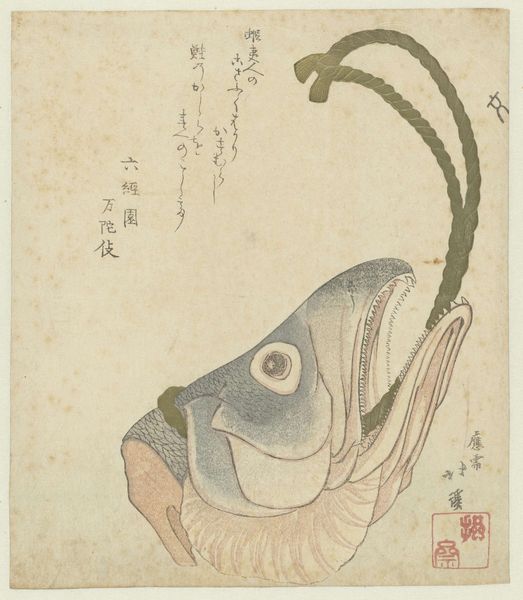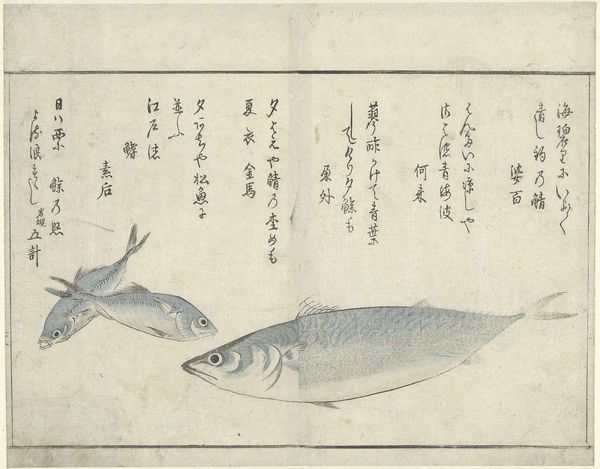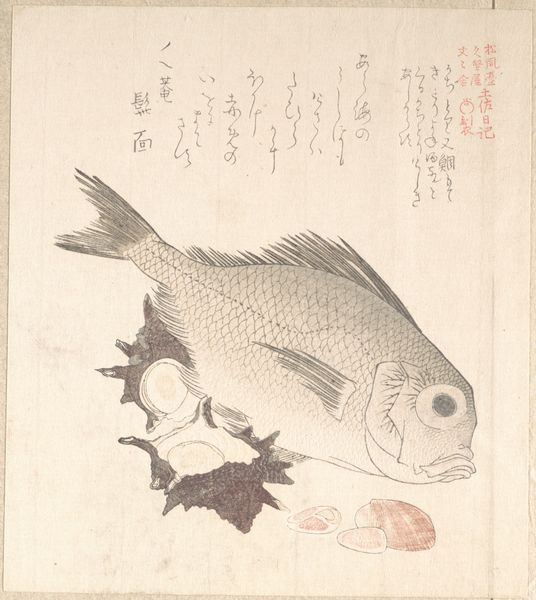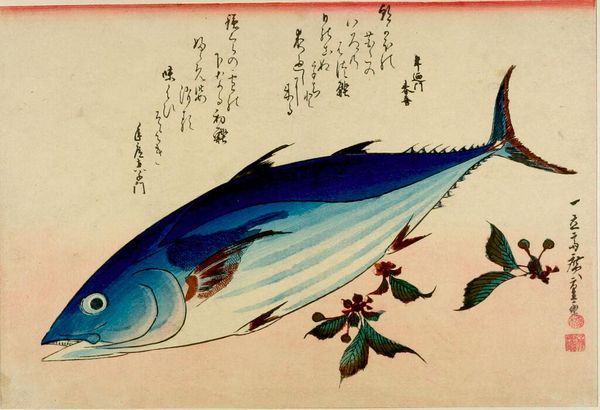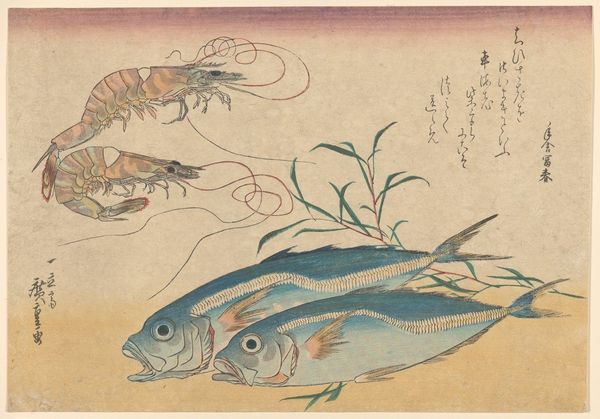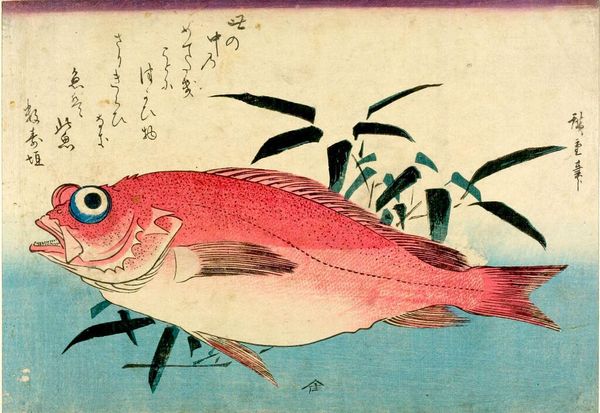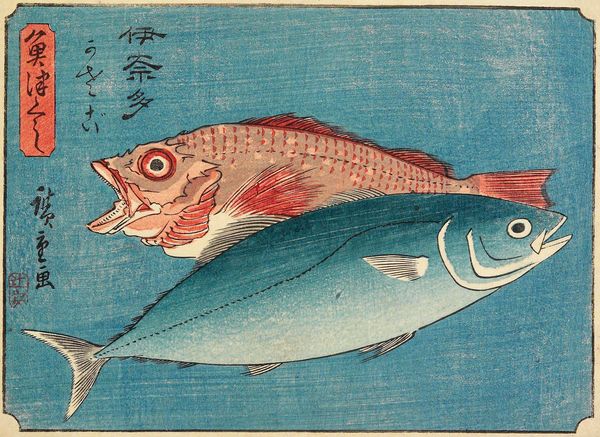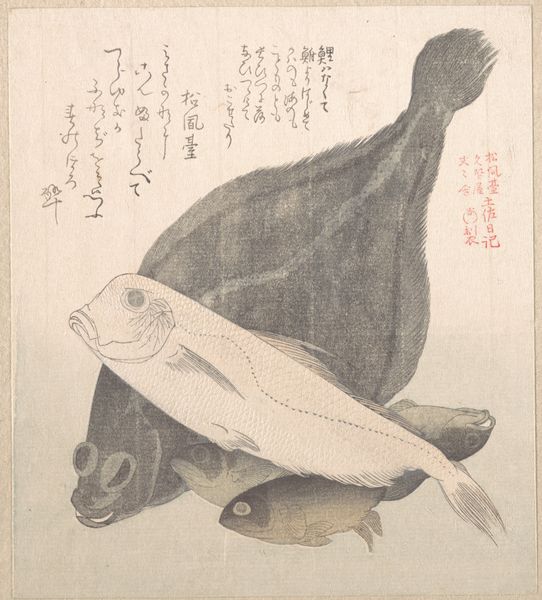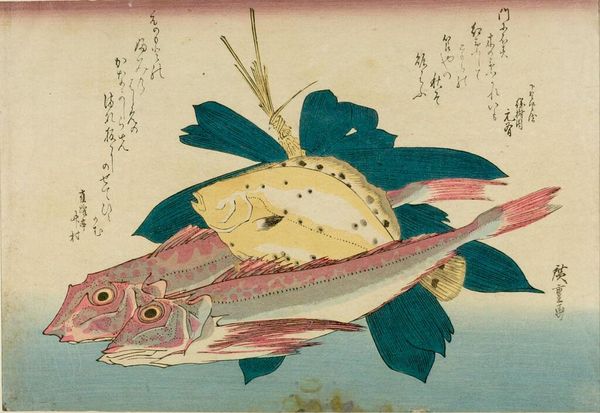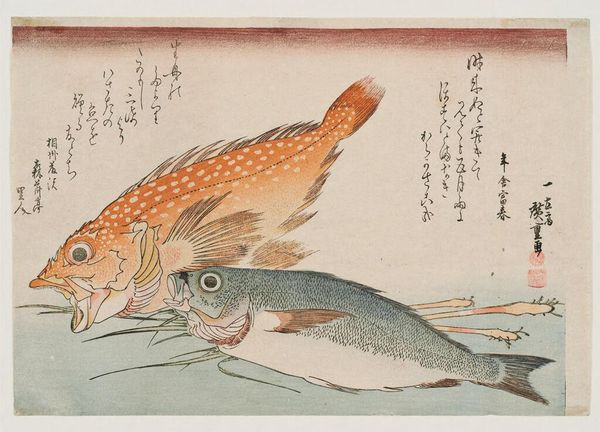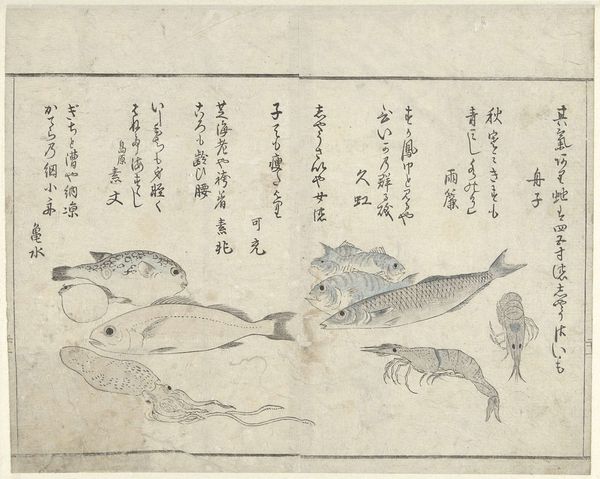
print, woodblock-print
# print
#
asian-art
#
ukiyo-e
#
figuration
#
woodblock-print
#
orientalism
#
line
Dimensions: height 182 mm, width 173 mm
Copyright: Rijks Museum: Open Domain
Curator: Here we have "Essays over gemakzucht," a woodblock print created around 1822 by Totoya Hokkei. The print currently resides here at the Rijksmuseum. Editor: My first impression is of stillness. There’s an almost eerie calm about the composition, despite the somewhat unsettling presentation of a fish skewered with an iris. The texture of the fish skin, with its gradient of grays, contrasts with the platter, suggesting layers of narrative depth. Curator: Precisely. Hokkei worked within the ukiyo-e tradition, capturing scenes of everyday life and popular culture. What’s remarkable here is the way he elevates what seems to be a simple arrangement of food and flora. The inclusion of calligraphy also indicates a reflective and erudite practice. Editor: Yes, it’s far from a snapshot of reality. Look closely at the surface upon which the fish is presented; the details are fantastic! The lines resemble crazed ceramic glaze but with tiny mask-like faces integrated. Was Hokkei involved in ceramics production as well? This print begs questions about production and class. Curator: The symbols within the imagery likely resonate with cultural significance lost to contemporary viewers. For example, in Japanese culture, fish symbolize prosperity and good fortune. Irises represent protection. Editor: Interesting. So, impaling a fish with a symbol of protection—does it negate the prosperity, or does it imbue the offering with safety, preserving it? That’s really compelling. It asks what kind of value the artist is negotiating—artistic value versus monetary, perhaps? The inclusion of text is significant: Were Hokkei's prints largely intended for a literary class? Curator: Indeed, that seems plausible when considering how frequently Hokkei intertwines cultural and symbolic cues in his works. They become less about documentation, more about a visual poetics intended for reflection. Editor: Right. Seeing how carefully considered the layering of visual cues were I feel more certain about my claim of a studied staging and refined application of artistic skill. What initially seemed "still" is active and full of intent. Curator: Ultimately, Hokkei’s approach grants us a lens through which we perceive both the symbolic undercurrents and the tangible presence of materials that define our experiences. Editor: Yes. It transforms the ordinary—a fish on a platter—into a space for considering cultural ideals, skill, and the meaning of the objects that surround us.
Comments
No comments
Be the first to comment and join the conversation on the ultimate creative platform.

